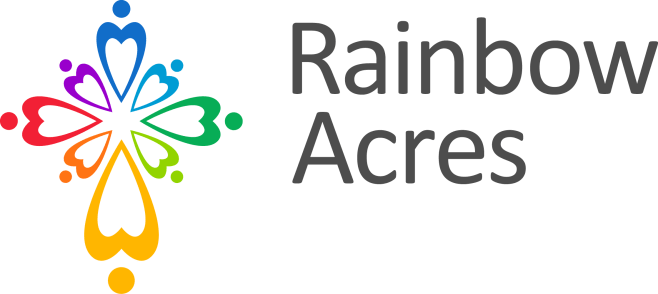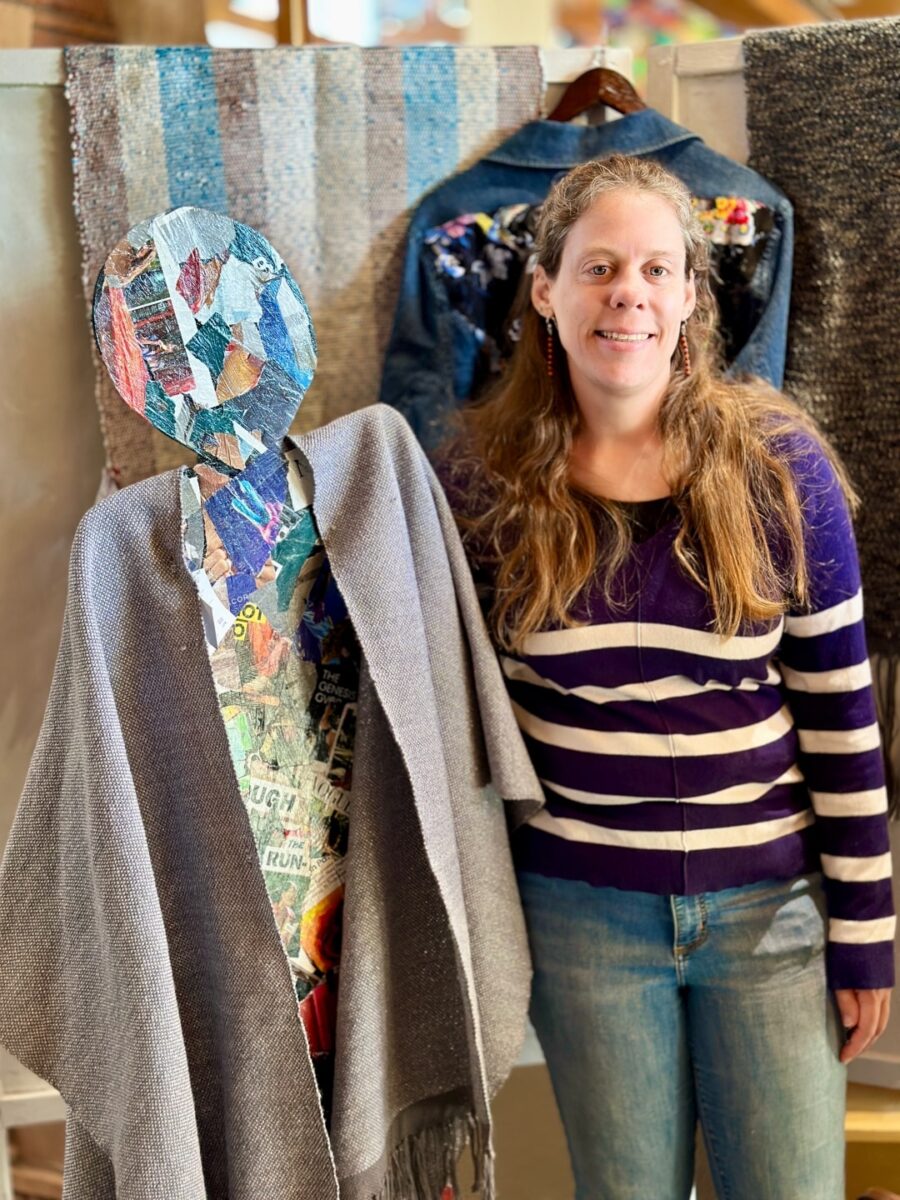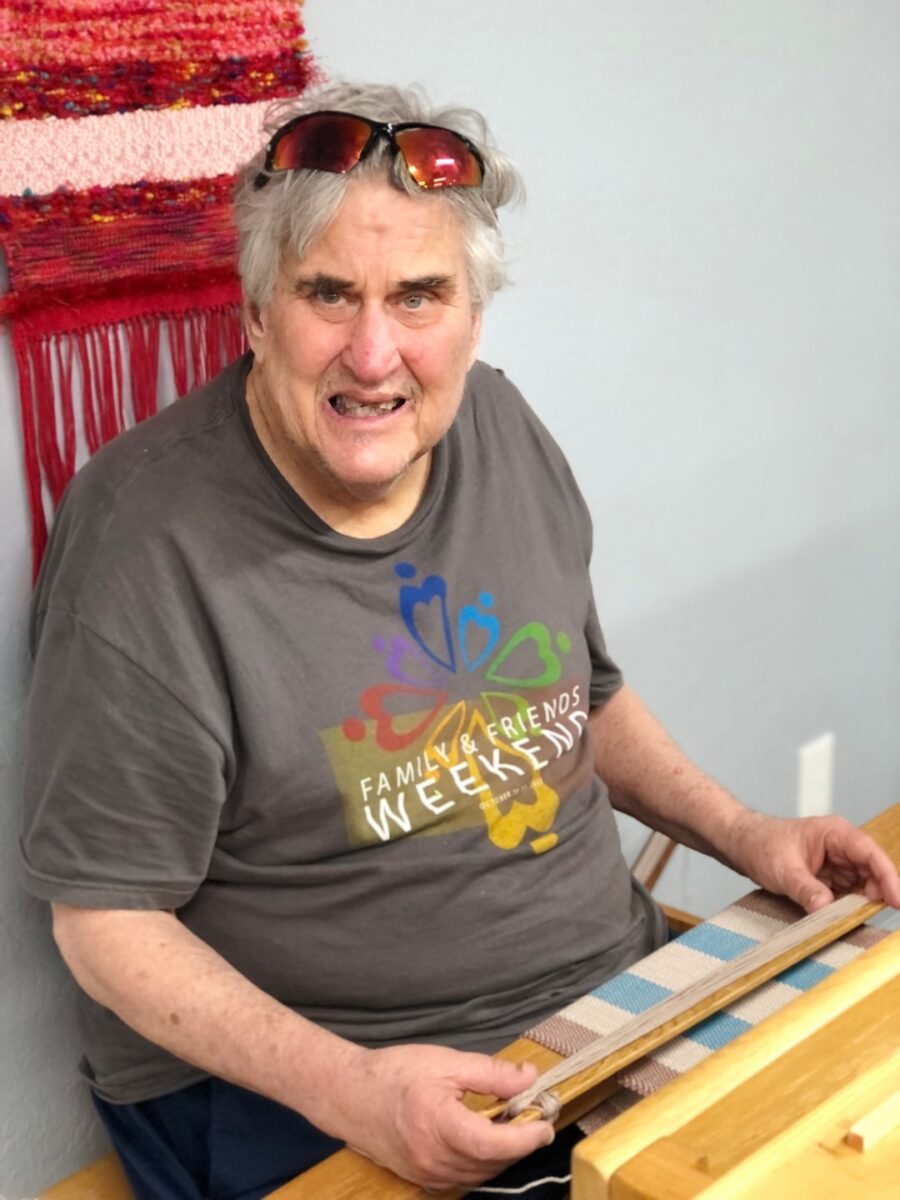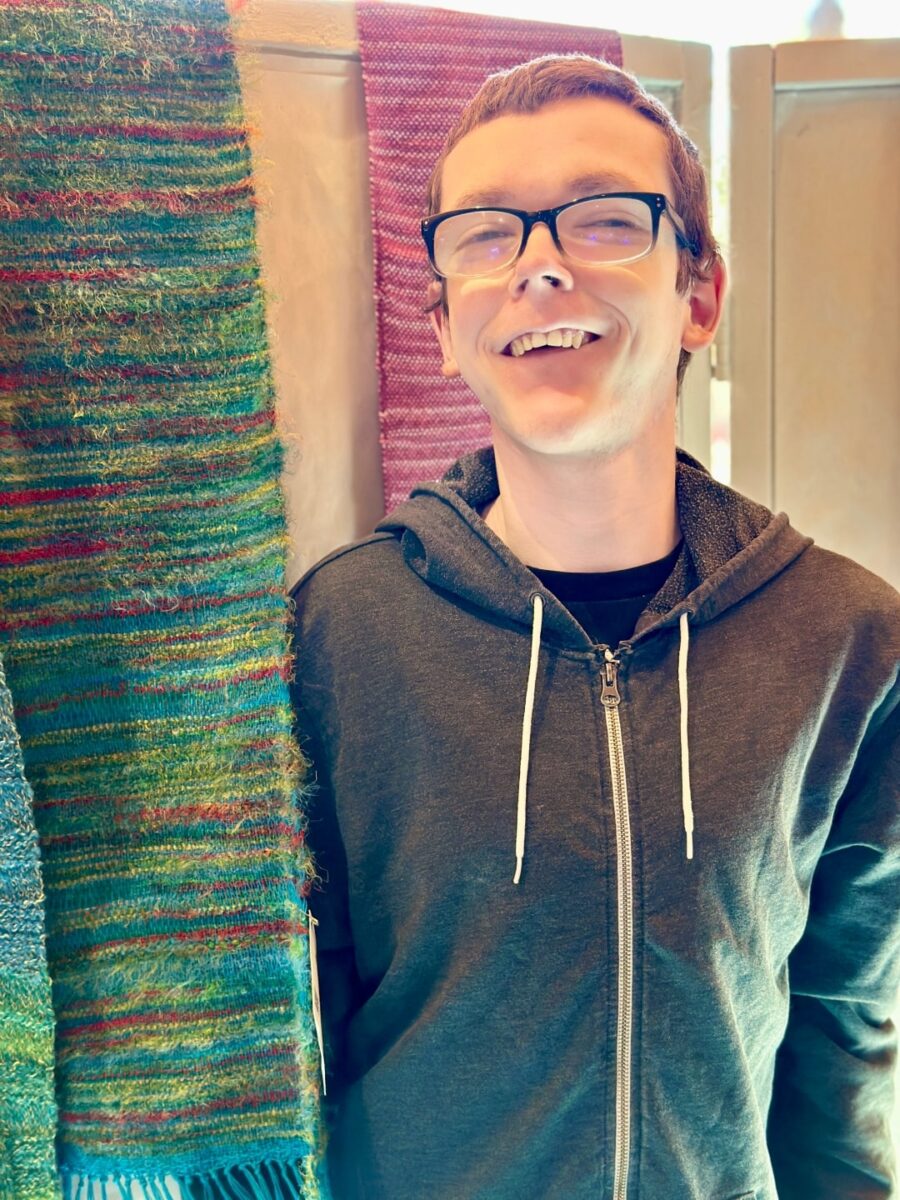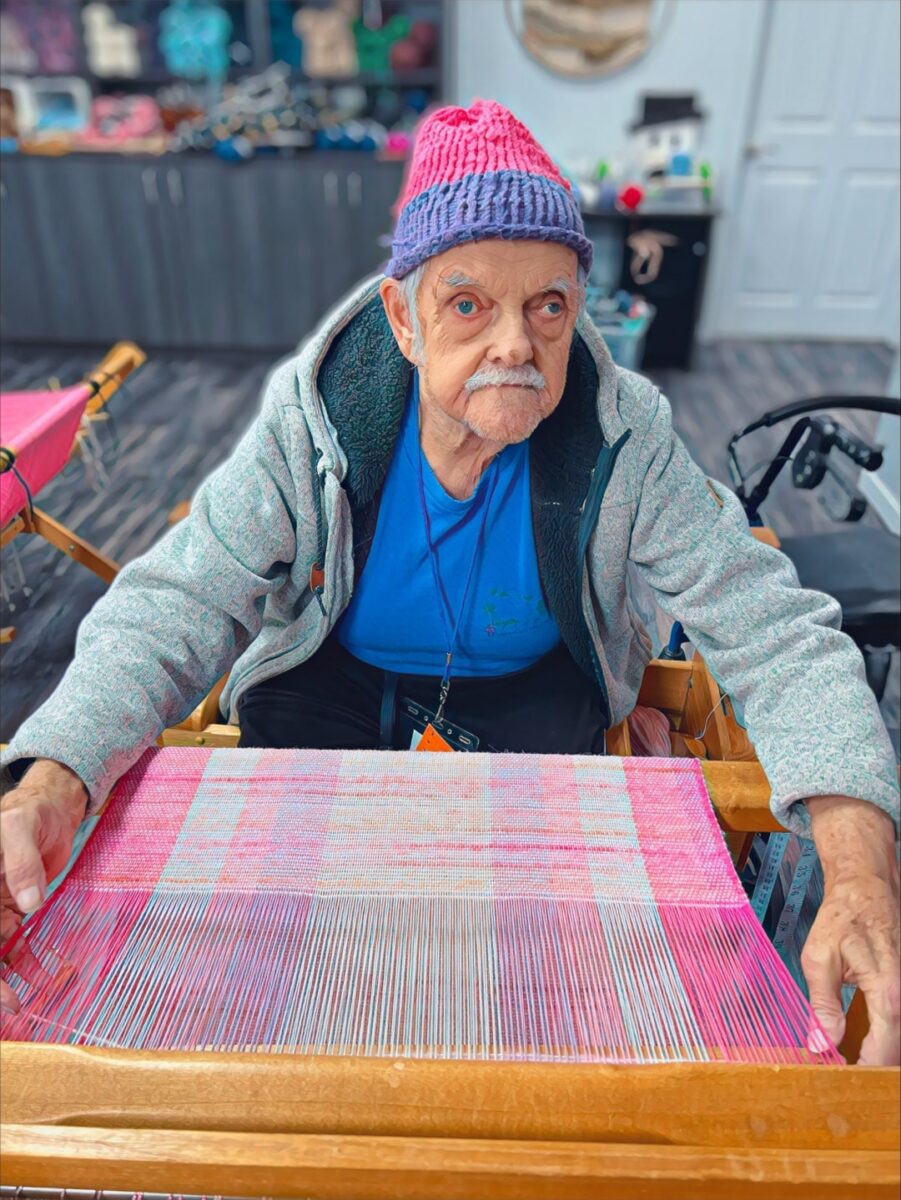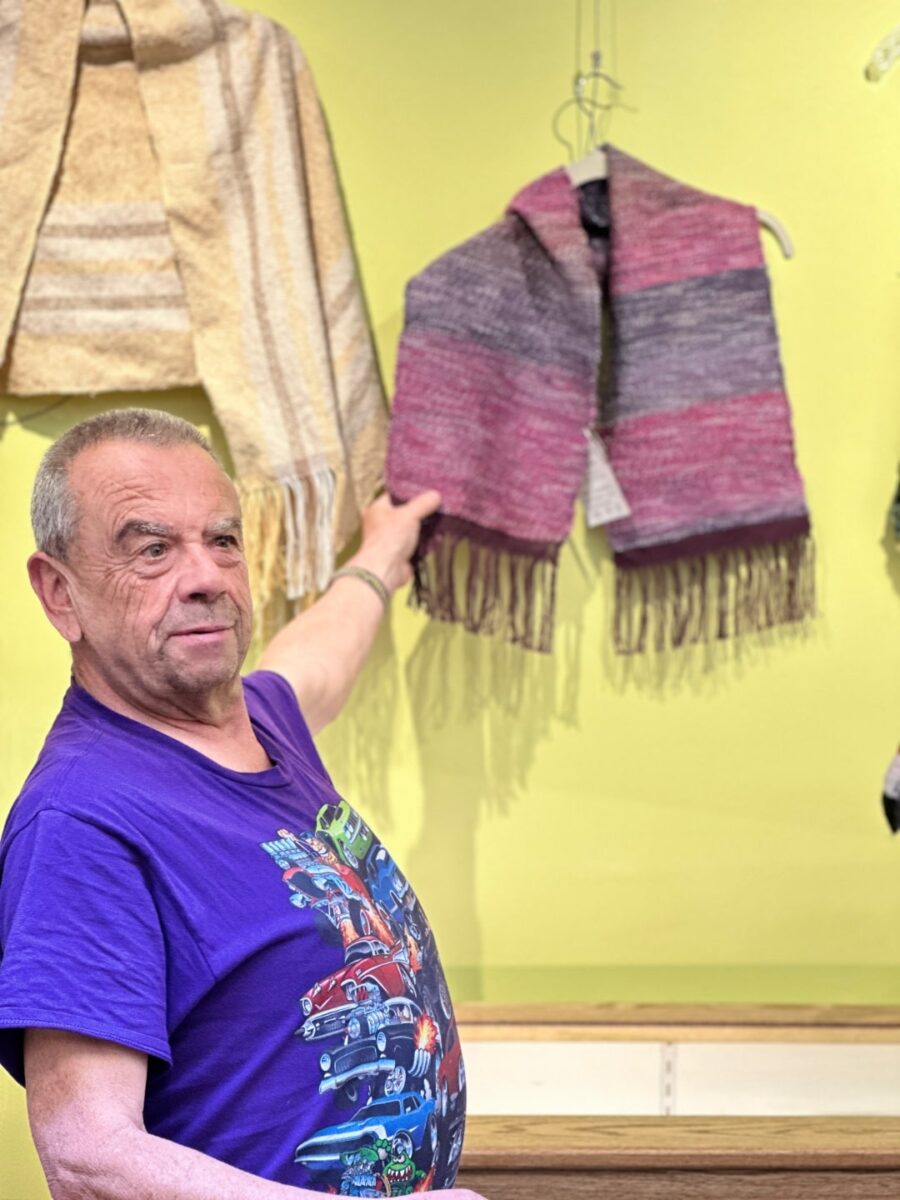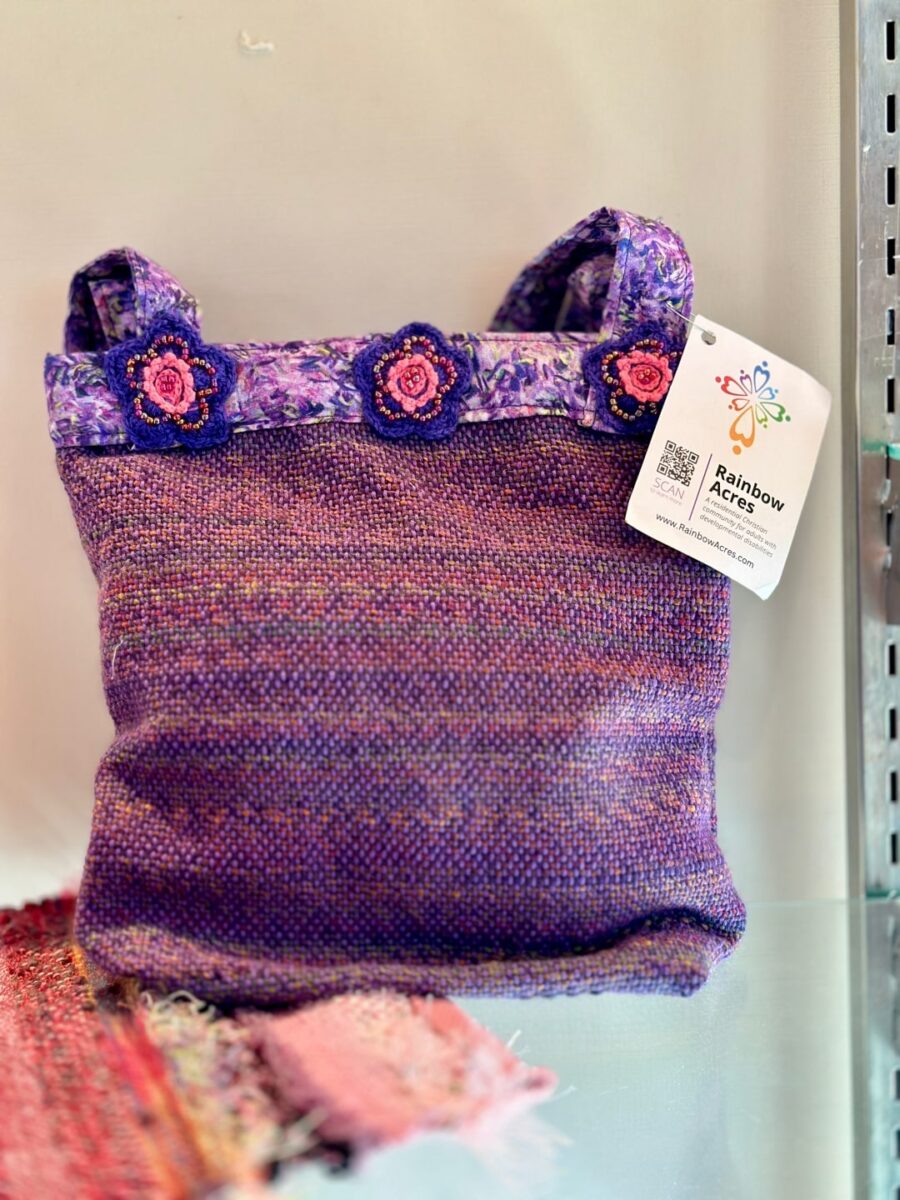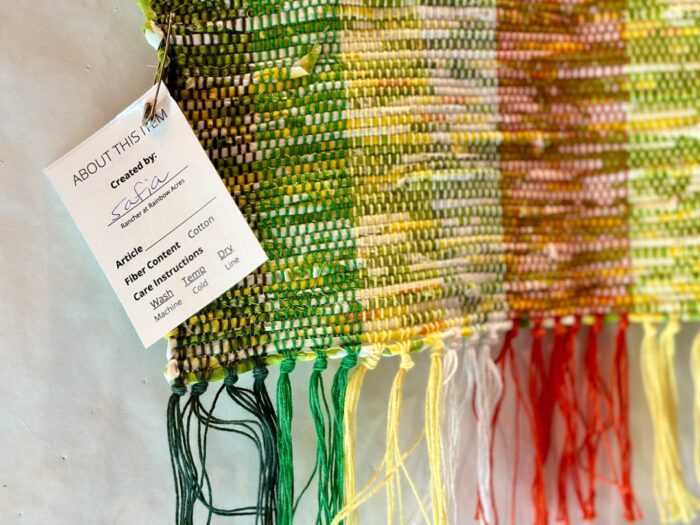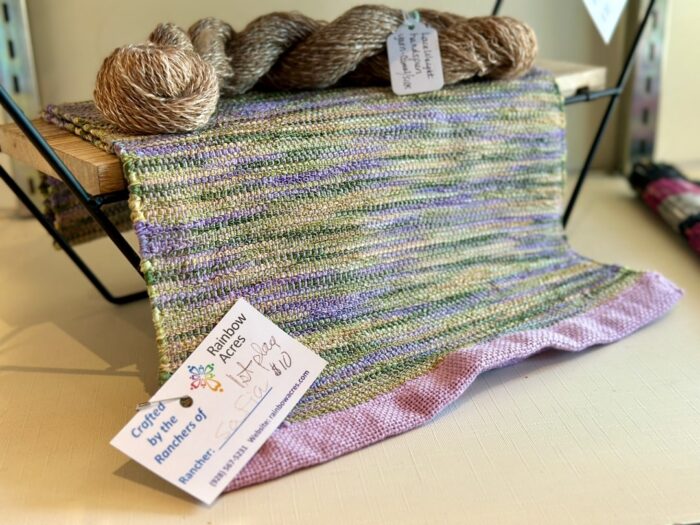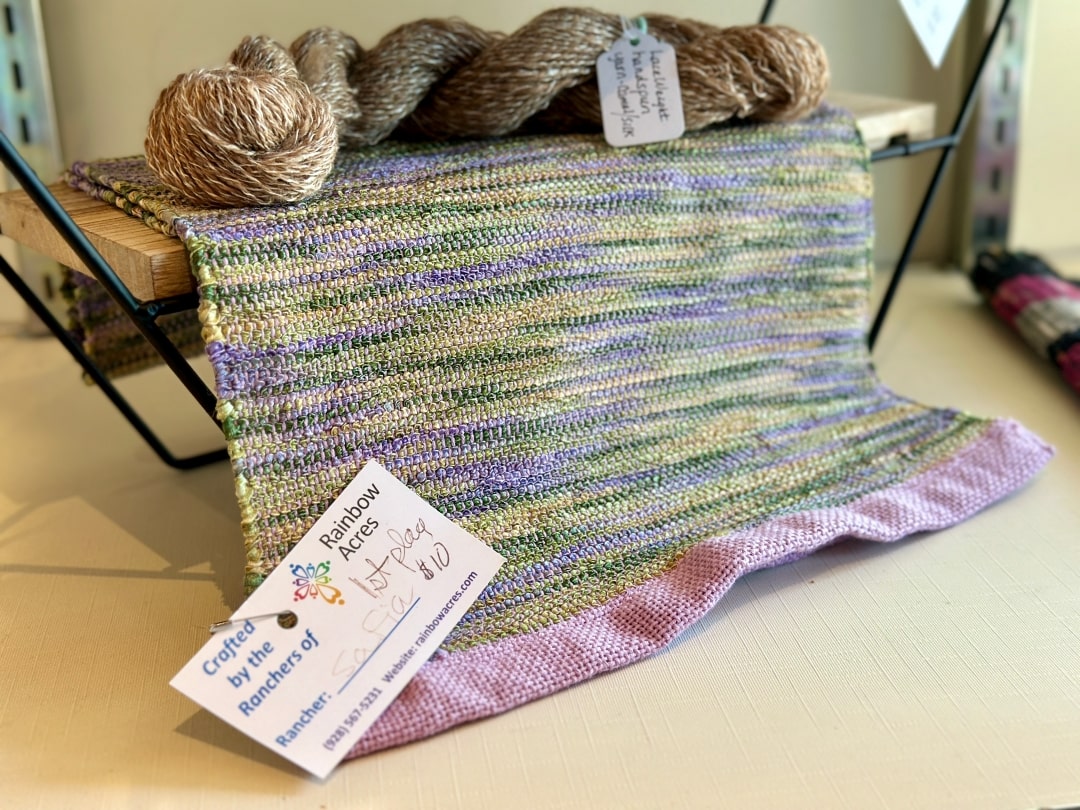
Rainbow Acres, a thriving community in Camp Verde, Arizona, has been transforming lives since 1964. This unique residential haven supports adults with developmental disabilities, affectionately known as “Ranchers,” as they discover their potential and lead fulfilling lives. Among its many initiatives, the Weaving Outreach program stands out as a shining example of creativity and community connection.
The Art of Weaving at Rainbow Acres
At the heart of Rainbow Acres’ creative programs lies the weaving studio, housing seventeen looms surrounded by shelves of colorful fibers. Ranchers engage in various projects, crafting practical and decorative items such as mug rugs, scarves, placemats, wall hangings, and ruanas.
The teaching process is tailored to meet individual needs. Colleen Murphy, Director of Practical Arts, leads weekly instructional classes through Rainbow Academy, providing one-on-one guidance that helps each artist explore their creative potential.
Behind the scenes, volunteers like Jill Suydam are instrumental to the program’s success. With seventeen years of service, Jill prepares looms for classes, a process involving winding warps and setting up intricate threading. The preparation of a loom, beginning with winding long strands of yarn (the warp) onto the loom, requires careful attention to detail to ensure even tension and proper alignment.
The Weaving Process
Creating woven pieces at Rainbow Acres involves a series of precise steps, each contributing to the quality and uniqueness of the final product.
Step 1: Warping the Loom
Warping the loom is the foundation of the weaving process. Volunteers prepare the warp—long strands of yarn that form the structure of the fabric. These threads are measured and cut to the appropriate length for the project, such as a scarf, rug, or placemat.
The warp is then wound onto the loom’s warp beam, a step that requires careful attention to ensure even spacing and consistent tension. Specialized tools like warping boards and tension guides are used to achieve accurate results. Ranchers who assist in this step learn the importance of preparation and focus, gaining hands-on experience with the tools and techniques.
Step 2: Threading the Heddles
The next stage is threading the heddles, thin components attached to the loom’s shafts. Each warp thread is passed through the eye of a heddle following a specific sequence determined by the weaving draft—a design plan that outlines the fabric’s pattern.
Threading the heddles is a meticulous process that influences the structure and design of the weave. This step bridges the gap between the conceptual design and the weaving process itself.
Step 3: Weaving
With the loom prepared, Ranchers begin weaving. They guide the weft—the horizontal threads—through the warp threads using shuttles. The loom’s mechanisms separate the warp threads into a shed, creating an opening for the weft to pass through.
As each row is added, Ranchers use the loom’s beater to press the threads into place. This process is rhythmic and calming, providing a sense of accomplishment as the fabric takes shape.
Tools of the Trade: Loom Types at Rainbow Acres
Rainbow Acres uses a variety of looms, each suited to different projects and needs:
- Floor Looms: These larger looms handle big projects like rugs and blankets. They allow for intricate designs and patterns, offering experienced Ranchers opportunities to expand their skills.
- Table Looms: Smaller and more portable, table looms are ideal for projects like scarves and placemats. Their simplicity makes them more accessible to Ranchers who are newer to weaving.
- Handlooms: Compact and easy to operate, handlooms are especially helpful for Ranchers with limited mobility, ensuring that everyone can participate in the weaving process.
Materials That Shape the Creations
The choice of materials plays an important role in the outcome of each piece. Ranchers and volunteers work with a few different types of fibers, each offering distinct qualities:
- Rug Yarn: Strong and colorful, rug yarn is used for practical items like placemats and rugs.
- Silk: Smooth and elegant, silk is perfect for delicate creations such as scarves or decorative hangings.
- Wool: Soft and warm, wool is ideal for blankets and shawls, adding texture and versatility.
Collaboration is a key aspect of the weaving process. Experienced weavers often mentor newcomers, enhancing skills and fostering a strong sense of community. On larger projects, Ranchers work together, building teamwork and mutual support while staff and volunteers provide additional guidance.
Impact of Weaving on Ranchers’ Lives
The Weaving Outreach program offers Ranchers more than just a creative outlet. Additional benefits of the program include:
- Skill Development: Ranchers improve eye-hand coordination, learn to combine colors effectively, and experiment with patterns and textures. These skills grow as they tackle increasingly complex designs.
- Therapeutic Impact: As we touched on earlier, the rhythmic nature of weaving provides relaxation, while mastering new techniques builds confidence and reduces stress.
- Personal Fulfillment: Completing projects brings pride and satisfaction, encouraging Ranchers to push their creative boundaries.
Weaving serves as a form of storytelling, with each piece reflecting the Rancher’s experiences and perspectives. This process fosters resilience as Ranchers persevere through challenges to bring their visions to life.
Community Outreach and Connections
The Weaving Outreach program extends far beyond Rainbow Acres, forging meaningful connections with others. Ranchers’ creations are sold in several places, including:
- The Rainbow Acres Gift Shop
- Local Church Events
- Regional Fairs
- Fiber Festivals
- National Conferences
These handmade items, cherished by buyers across the country, become part of the Ranchers’ stories, building bridges of understanding and appreciation.
The Verde Valley Weavers & Spinners Guild significantly enhances the program. Guild members volunteer their expertise, offering guidance on advanced techniques, assisting with loom maintenance, and collaborating on projects. This partnership not only improves the quality of the woven goods but also provides Ranchers with mentorship and ties to the broader weaving community.
Weaving a Tapestry of Independence and Growth
The Weaving Outreach embodies Rainbow Acres’ mission of empowering individuals with diverse abilities, challenging perceptions, and fostering independence. The art of weaving serves as a metaphor for the Ranchers’ journey – each thread representing a skill learned, a challenge overcome, or a connection made. As they weave intricate patterns on their looms, Ranchers simultaneously weave richer and more fulfilling lives.
